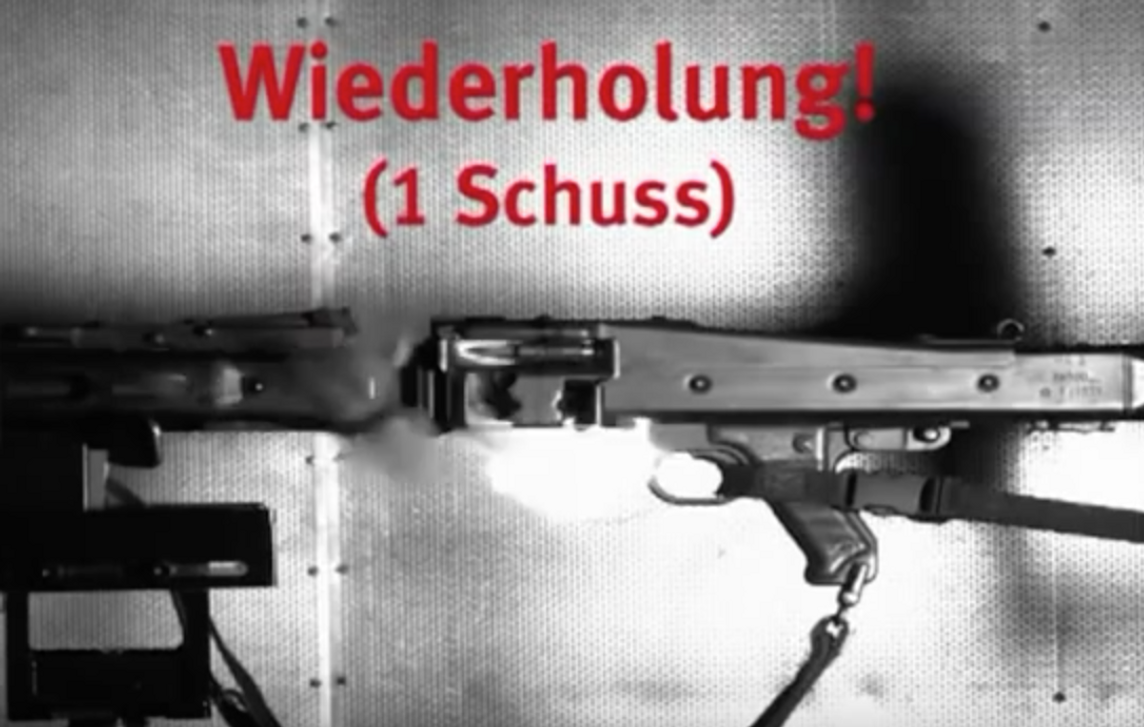Most machine guns throughout history were produced for military use. Armorers were trained and supplied to support these guns with specific parts and tools. Replacement guns were typically available when repairs weren’t practical, so a gunner always had access to a well-functioning gun. Unfortunately in the transferable market, replacement machine guns are not an option and parts and service can be a challenge.
Fundamentally, firearms (especially machine guns) are violent mechanical systems. The component parts are subjected to immense impact, pressure, stress, and heat. When these parts eventually wear or break, performance and safety become serious concerns. If you own a machine gun, you need someone who is experienced and knowledgeable to repair the inevitable problems when they occur. If you have an antique machine gun that you want to actually shoot, these problems become much more complicated to deal with.
There are a few people out there who can tackle problems with antique machine guns. One of the people I admire most in this business is Bob Naess of Black River Militaria. This guy can do anything. His in-depth knowledge, shop skills, and spare parts resources are astounding. He’s the guru of old machine guns and has been instrumental in preserving so many of the transferable machine guns for decades now.
When choosing a machine gun to buy or deciding which of the machine guns you already own you want to shoot, there are several things to consider:
1) What is likely to break?
The big concern here is wear or damage to the registered part.
2) Can it be fixed?:
- a) Who is going to fix it?
- b) Can I get replacement parts?
- i) Are the parts difficult to install?
- i) Are the parts difficult to install?
- c) What will the total cost be?
- d) How long with the repair take?
3) What is the efficacy of the repair?
4) Is the damage permanent?
Let’s look at some examples:
1) Out of Battery Detonation in an MG42:
At the beginning of this video you’ll see an out-of-battery detonation on an MG42. This can happen from a variety of reasons such as an obstructed barrel, broken locking collar, bolt bounce, etc. When it does, you can see how the sheet metal receiver is damaged. The long receiver would need to be straightened much like a car with a bent frame. Many of the parts that are riveted or welded to the receiver such as the trunion and rails may also need to be replaced. While the parts are currently available, the repair would be very difficult and time-consuming. The overall gun would also be weaker due to the stress that was put on the system so some of the damage would be permanent.
2) Squib Round in Thompson 1928
The profanity at the beginning of this video is certainly understandable. Here you have an expensive transferable gun that needs a new barrel installed. While original 1928 barrels are available, installing a 1928 barrel can be tricky. The first part is getting the original barrel off the receiver without damaging the receiver. A special barrel / resting bar vise has been made just for this operation. Interestingly, the Thompson bolt headspaces from a surface inside the receiver rather than the back of the barrel like most SMGs, so the new barrel would need be precisely set. The new barrel would also require further milling at the front to ensure that the compensator and front sight assembly is properly aligned. Successfully repairing this type of breakage requires a lot of knowledge and shop skills.

3) Broken Extractor on an 08 Maxim.
This is a very simple fix that could be done in just a couple minutes if you have a replacement extractor. However, replacement parts for this gun can be very expensive if you can find them.
4) Stemple 76/45 STG setups by BRP
While any gun can wear and break a lot can be done to mitigate these eventual problems. It all starts with the initial design of the gun to maximize durability and standardize parts. Overall our guns are difficult to break and easy to fix. By expecting certain parts to wear over time we specifically designed the key stressed components such as bolts, barrels, sears, trunions, and ejectors to be easily replaced with standardized parts. We further designed this system to protect the registered receiver from wear during use. Unlike the MG42 example above, the receiver is protected from damage that could happen from a catastrophic out-of-battery detonation. And unlike just about any other transferable machine gun on the market, we have available service. If you need service, we are here to support our products.
------------------
UPDATE 2-12-2020
I just found this video on Youtube:
At 6:15 there's an out-of-battery discharge. I don't envy the person who is going to take on the job of fixing this gun. Finding replacement parts may be even more difficult. Hopefully the damage isn't permanent leaving a weaker & less functional gun.

